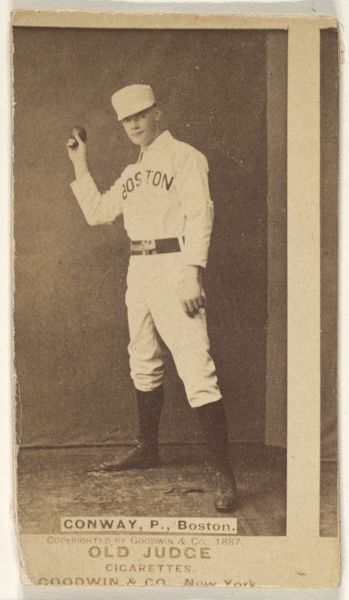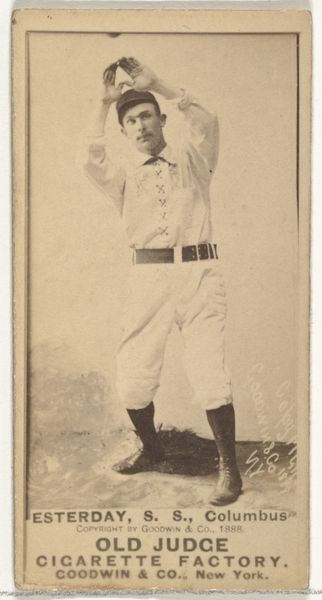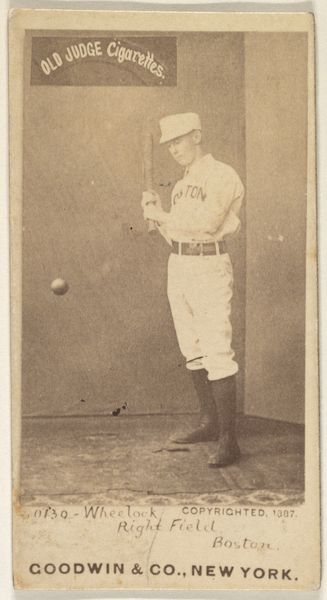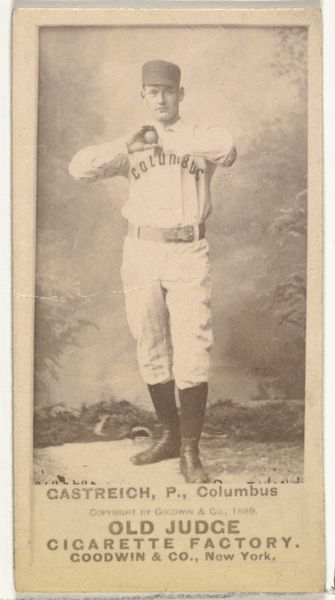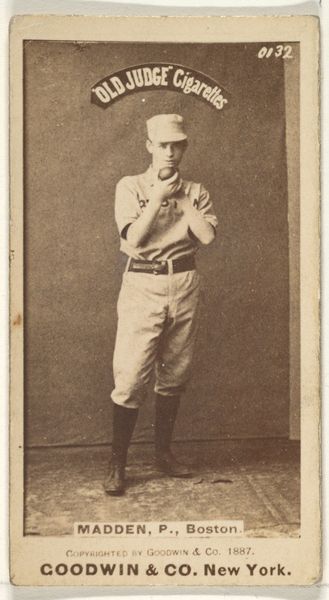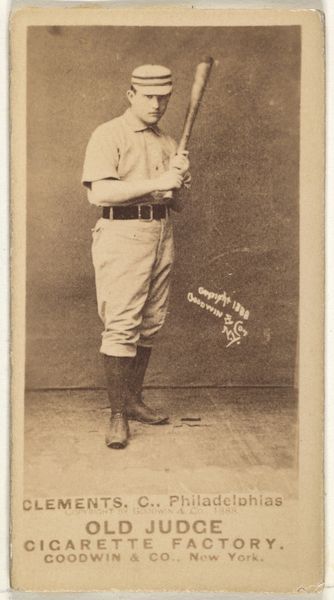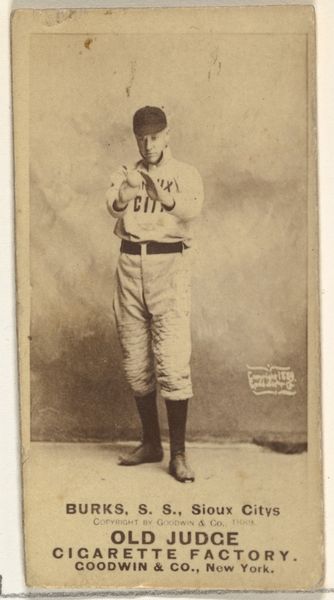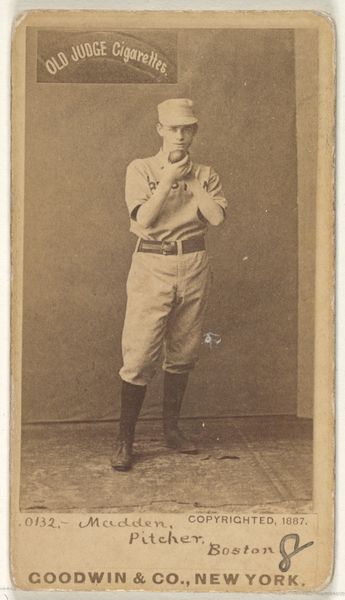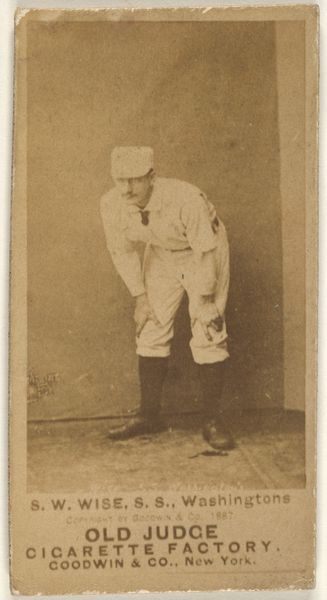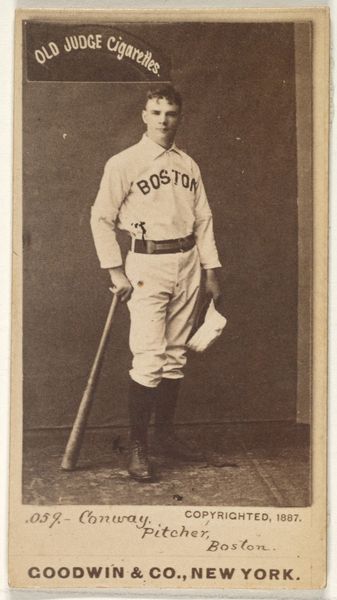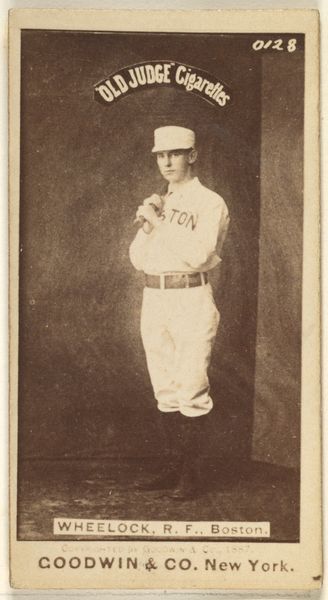
Conway, Pitcher, Boston, from the Old Judge series (N172) for Old Judge Cigarettes 1887
0:00
0:00
drawing, print, photography
#
portrait
#
drawing
# print
#
photography
#
genre-painting
Dimensions: sheet: 2 11/16 x 1 3/8 in. (6.9 x 3.5 cm)
Copyright: Public Domain
Editor: So, here we have a baseball card, "Conway, Pitcher, Boston" from 1887, part of the "Old Judge Cigarettes" series. It’s a photographic print, pretty small, and honestly, it has this really formal, almost staged quality. How would you approach analyzing a piece like this? Curator: I'm immediately drawn to its context. It's not just a portrait; it's an advertisement embedded within a burgeoning culture of celebrity and consumerism. This card tells us much about the commercialization of baseball and the rise of mass media in the late 19th century. Do you see how the "Old Judge Cigarettes" branding is as prominent as Conway himself? Editor: Absolutely. It’s right up there, and seems intentional. It makes me wonder about the relationship between the athletes and the companies…almost like early sponsorships. Curator: Precisely. These cards weren't solely about celebrating athletic prowess; they were about associating that athleticism, that masculinity, with a particular brand and lifestyle. Consider also who was consuming these cigarettes, and by extension, these images. Who had access, who was being excluded, and what values were being promoted? The pose itself…does it read naturally or contrived to you? Editor: It feels constructed. He's clearly posing, which makes the image itself feel like a performance. It makes me think about image manipulation in the media from then, up to modern day…almost a historical comparison about manufactured personas. Curator: Exactly! The photograph freezes him in a perpetual moment of athletic readiness while simultaneously marketing a product. These cards circulated widely, shaping perceptions and reinforcing the connections between consumption, sport, and identity. How do museums play into that role in the modern era, do you think? Editor: Good point! Displaying it now reframes it. It moves from advertisement to a historical document, something worthy of critical analysis rather than straightforward consumption. Curator: Yes, it becomes a piece about its history of circulation as much as a piece about the ball player or the baseball team. What a cigarette card tells us!
Comments
No comments
Be the first to comment and join the conversation on the ultimate creative platform.
